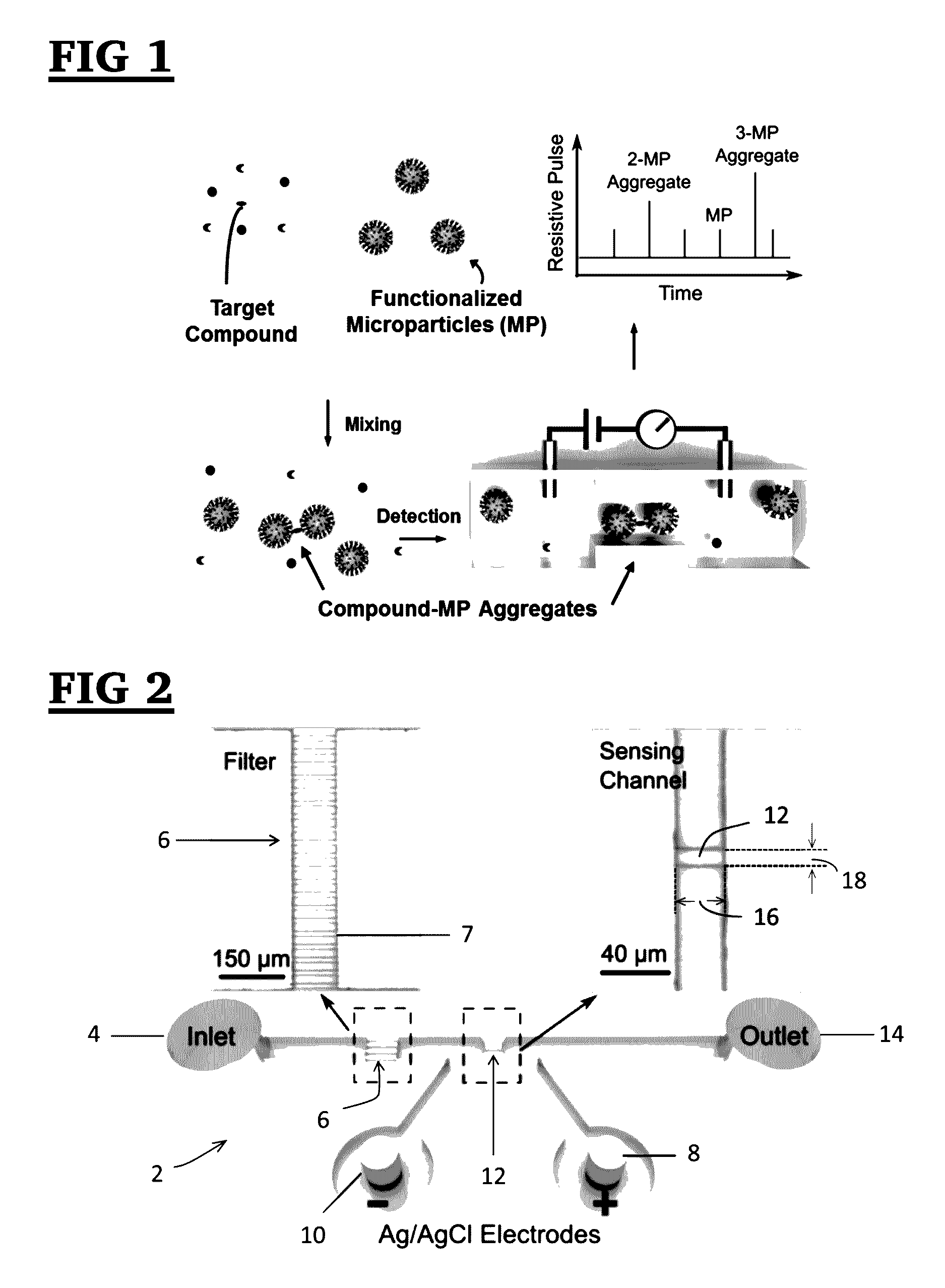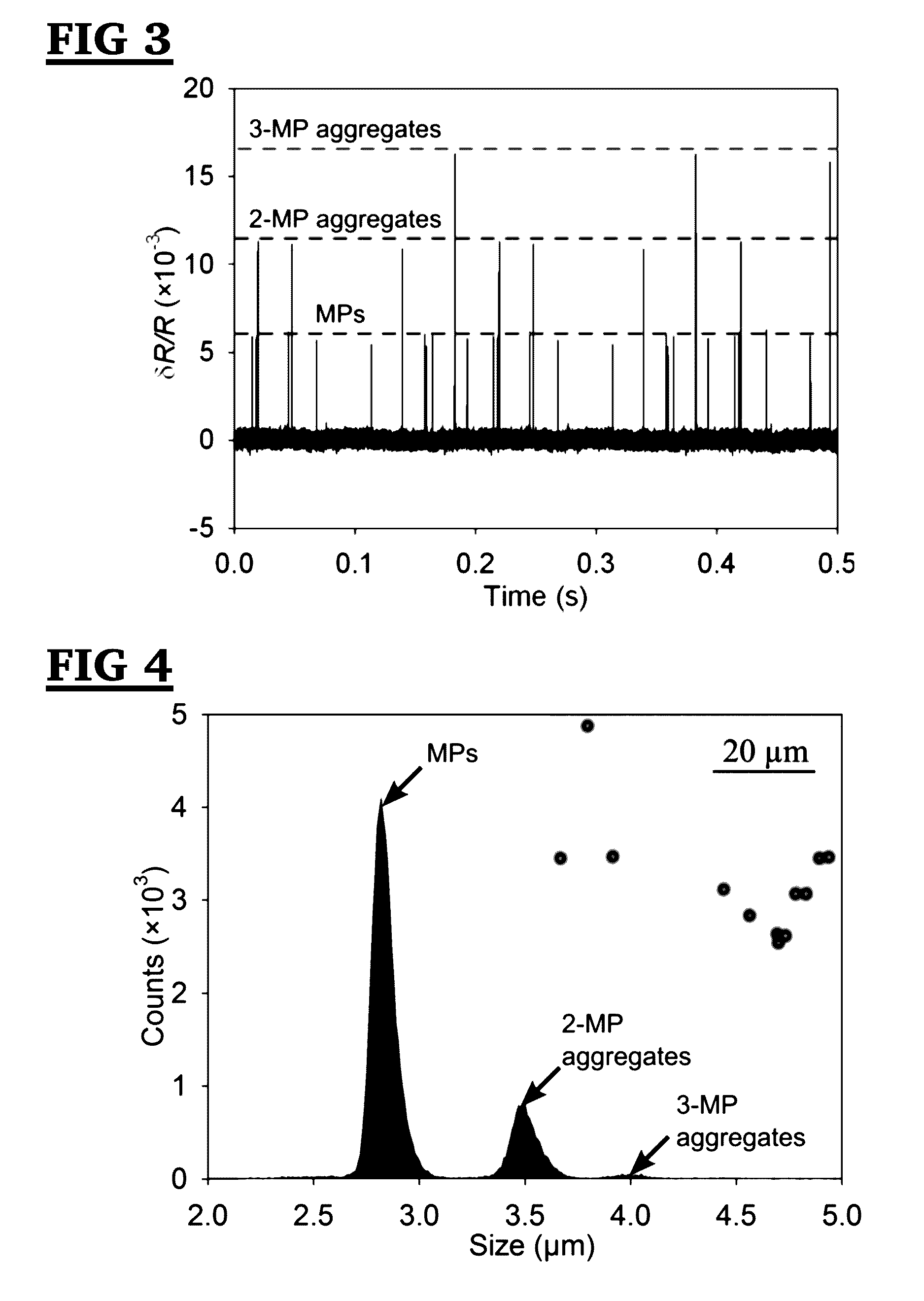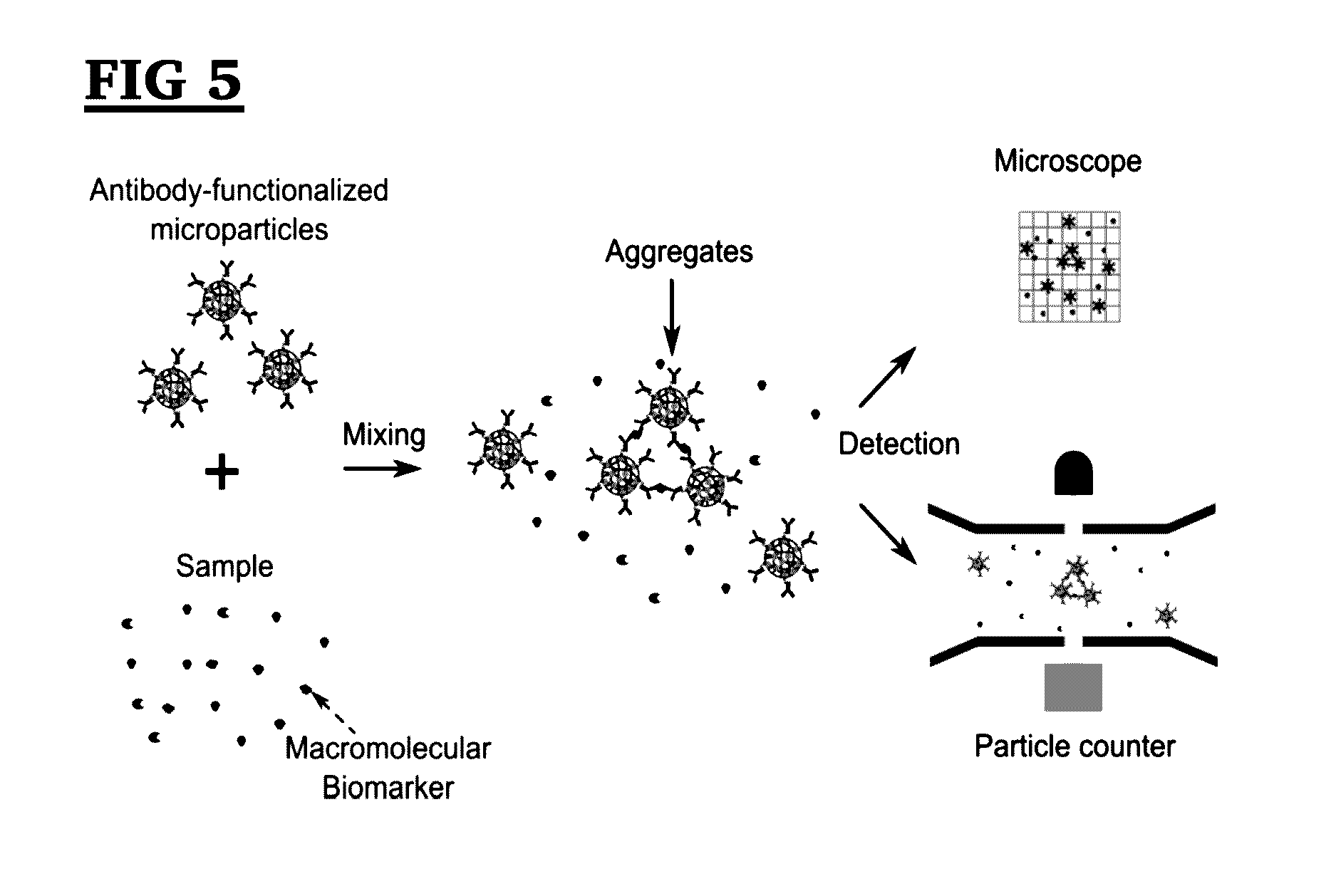Biomarker assay using microparticle aggregation
- Summary
- Abstract
- Description
- Claims
- Application Information
AI Technical Summary
Benefits of technology
Problems solved by technology
Method used
Image
Examples
example 1
Resistive Pulse Sensor Fabrication and Testing Procedure
[0118]The resistive pulse sensor was fabricated using the standard soft lithography method. It consists of 1) a sensing channel with a width of 10 μm and a length of 30 μm to detect aggregates; 2) an on-chip filter with a pore width of 10 μm; and 3) a pair of Ag / AgCl electrodes to measure the resistive pulses. A two-layer SU8 mold, consisting of patterns for the sensing channel and the filter (with a thickness of 10 μm) and patterns for reservoirs (with a thickness of 40 μm), was created by a two-step photolithography process (See, FIG. 20). Microchannel, filters and reservoirs were formed by pouring polydimethylsiloxane (PDMS) onto the two-layer SU8 mold followed by degassing and curing. The filter blocks background particles larger than the sensing channel to ensure a continuous detection. This two-layer structure offers a higher sensitivity of the sensing channel without increasing the flow resistance of reservoirs.
[0119]Nex...
example 2
[0121]To prepare antibody-functionalized MPs, firstly, streptavidin functionalized magnetic MPs with an average diameter of 2.80 μm (dynabeads M280, Life Technologies, USA) were diluted 1 / 65 in phosphate buffer saline (PBS, pH 7.4, Sigma-Aldrich, USA) containing 0.1% bovine serum albumin (BSA, Sigma-Aldrich, USA). The biotinylated goat anti-human ferritin antibody (anti-ferritin Ab, 6.5 mg / ml, US Biological, USA) was diluted 1 / 780 in PBS with 0.1% BSA. Next, 166.7 μl of diluted M280 MP solution was mixed with 166.7 μl diluted anti-ferritin Ab solution for 30 min in a thermal mixer at a speed of 650 rpm at room temperature. M280 MPs conjugated with biotinylated anti-ferritin Ab through the streptavidin-biotin binding. It has been found that further increasing the incubation time has little effect on the volume fraction of aggregates. The MP solution was then placed on a magnet to separate MPs from the solution; next the supernatant containing unconjugated anti-ferri...
example 3
Materials and Methods for Analysis of Sample
[0123]Streptavidin-functionalized Microparticle (MP) (Dynabeads M-280 with a diameter of 2.8 μm), biotinylated polyclonal rabbit anti-goat IgG (rAb) antibodies and goat anti-rabbit IgG (goat IgG) antibodies (labeled with Alexa Fluor 488) were bought from Life Technologies (Carlsbad, Calif., USA). Goat anti-human ferritin polyclonal antibody (gAb) and human ferritin were purchased from United States Biological (Salem, Mass., USA). NHS-Fluorescein, NHS-PEG4-Biotinyltion and Zeba spin desalting column were purchased from Thermo Scientific (Waltham, Mass., USA). Dimethyl sulfoxide (HPLC grade) was bought from Alfa Aesar (USA). Phosphate buffer saline (PBS, pH 7.4), and bovine serum albumin (BSA) were obtained from Sigma-Aldrich (St Louis, Mo., USA).
[0124]To prepare the immunoaggregation sample, MP and biotinylated rAb were diluted to 0.16 mg / mL and 6.4 ng / mL separately in PBS containing 0.1% BSA. Equal volumes of 166.7 μL of diluted MP solutio...
PUM
 Login to View More
Login to View More Abstract
Description
Claims
Application Information
 Login to View More
Login to View More - R&D
- Intellectual Property
- Life Sciences
- Materials
- Tech Scout
- Unparalleled Data Quality
- Higher Quality Content
- 60% Fewer Hallucinations
Browse by: Latest US Patents, China's latest patents, Technical Efficacy Thesaurus, Application Domain, Technology Topic, Popular Technical Reports.
© 2025 PatSnap. All rights reserved.Legal|Privacy policy|Modern Slavery Act Transparency Statement|Sitemap|About US| Contact US: help@patsnap.com



